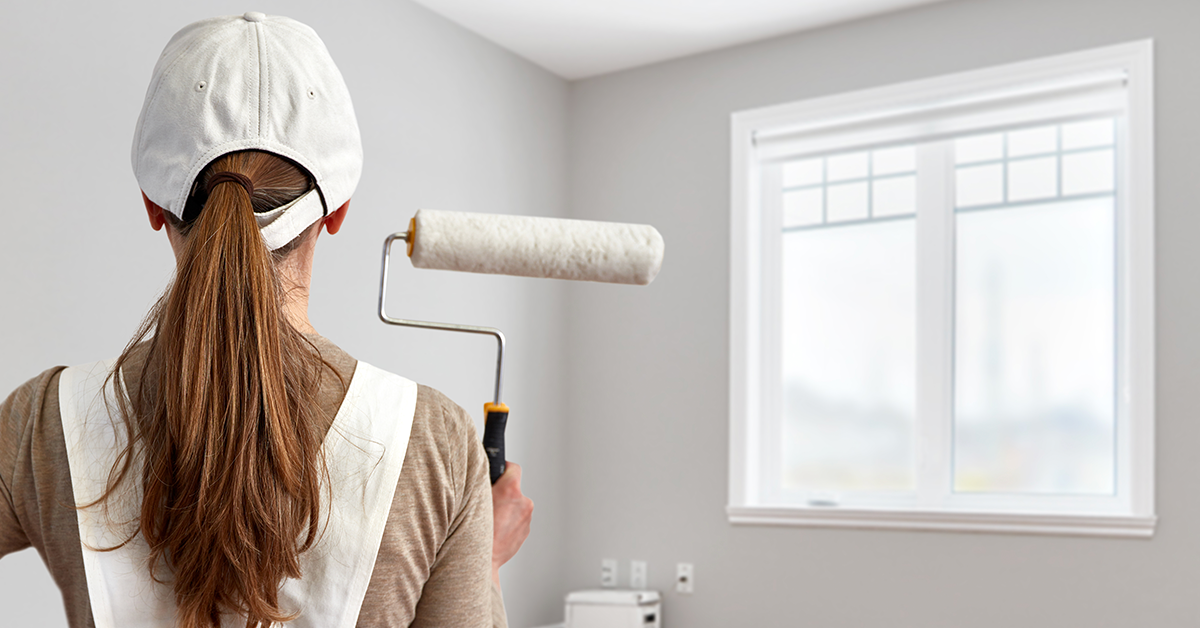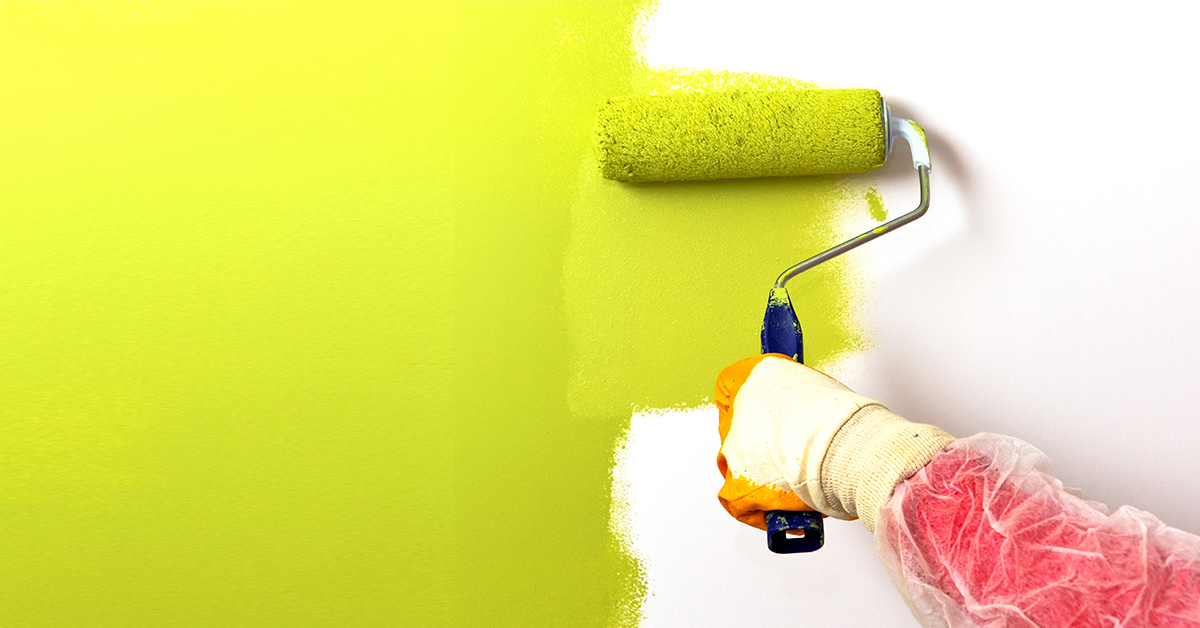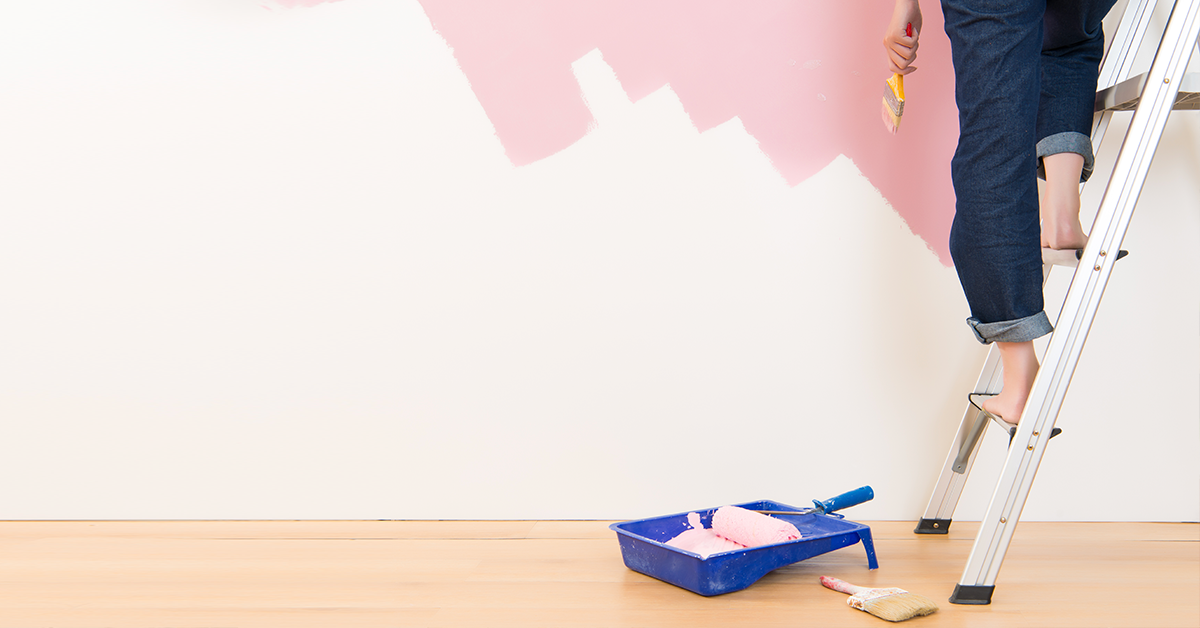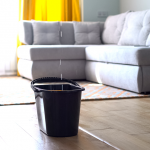Now is the time to get round to doing a bit of DIY for your home that you’ve been putting off, whether it is wall painting for an entire bedroom and creating an accent wall for your home office. Painting a room is a great way to lend a new vibe to an old space without any major upgrades.
While tackling a DIY home painting project, knowing a few additional painting techniques and tips can give the most satisfying results. A DIY home painting job might sound like a great weekend project but it is important to remember that for more complicated tasks like waterproofing or painting an entire house, it is recommended to consult professionals like Berger Express Painting, who use advanced tools, health and safety kit and furniture and floor covers to make the painting process faster, cleaner, safer than ever before.
If you are seriously considering painting your home walls on your own, you need to be very careful. You don’t want paint spills ruining your favourite furniture or end up having to redo everything since you missed out on an important step. So, if you’re wondering how to paint a wall, these eight painting tips can help you improve the quality of your work and save you time, whether you’re looking for a quick home makeover, changing your decor or doing some routine home maintenance.
1. Plan the process

Before you begin painting your home walls, you must make a plan. You probably already have some decor ideas in mind. Think of what colours and elements you wish to incorporate. Do you want to paint all walls or just create an accent wall? Remember that you are not limited to painting all four walls in the same colour. Consider painting a wall in a bold hue or highlight mouldings in a contrasting shade. And don’t forget the ceiling- it could do with a refresh as well!
2. Decide your colour and shop online
Browsing through paint colours online can be overwhelming. Begin by figuring out the general colour characteristics- Do you want a warm or a cool shade? A neutral or a bright colour? If you have existing decor elements and furniture in the room, you might need to consider how the shade will compliment them. To make this process easier, you can make use of Berger Paints ‘Shop By Look’ tool. Derive inspiration from different themes that set a mood, be it bohemian, eclectic, couture or modern style and get curated colour combinations.
3. Shop for materials and tools
Lucky for you, buying wall paints online is now so much easier! Berger Paints online recently launched an e-commerce site wherein you can buy paints, tools, equipment, furniture covers- pretty much everything you would require for your home painting job. If you’re on a lookout for a paint that protects your home walls from pollution and bacteria whilst enhancing the aesthetic value, check out Berger Breathe Easy. While you’re at it, don’t forget to make a list of few must-haves for a DIY painting project:
- Paint
- Primer
- Paint roller
- Drop cloths
- Paint brushes
- Sandpaper
- Painter’s tape
- Putty knife
- Drop cloths and covers
- Extendable ladder
4. Prep the room and walls

Room: You certainly don’t want to ruin your furniture, so empty the room of all the furniture. If the space is less, push everything to the center, away from the walls. Cover the pieces with a drop cloth or plastic sheet. Grab a roll of painter’s tape and apply it firmly to the edges of the room, corners, door and window casing. Don’t forget to cover electrical boards and switches, doorknobs and everything else that you want untouched with paint spills.
Walls: Do a thorough inspection of the walls. If you notice any chipping, peeling, flakes, dampness or other signs of damage, this might be best left to waterproofing experts like Berger Home Shield. Ensure the wall is damp-free before you begin. Sand and scrape any flaws to obtain a smooth wall before you apply primer. Only begin painting if the wall surface is even.
5. Wear protective gear
Your furniture is not the only thing that needs protecting. Wear proper goggles to protect your eyes and if you plan on sanding, use a protective face mask so that you don’t end up inhaling any dust or debris. Wear clothes you don’t mind ruining if you end up spilling paint.
6. Pick your painting techniques

You are all geared up and the paint is ready, but make sure you plan a strategy before you begin. Work from the top of the room, starting with the ceilings. If you are painting dark walls with a brighter hue, plan on three coats: primer and two coats of new colour. Planning an accent wall? Paint the adjoining light-coloured walls first. Don’t worry about marks or spills of a light paint on your accent wall- the dark paint will cover up any lighter paint from before.
When it comes to the checklist of how to paint walls, applying a primer is an important step. The primer not only helps the paint stick to the walls but also minimises the number of coats required. Using a paint roller, apply primer onto the wall in an even coat from the ceiling to the floor, covering the walls entirely. Let the primer dry for at least four hours before you begin painting.
Once the primer dries up, dip the tip of your paint brush about 2” into the paint, letting the excess drip off. Then, brush the paint onto the wall along the painter’s tape in smooth linear strokes until you complete the entire outer perimeter of the painter’s tape.
Next, use a wide roller to paint the entire wall, applying paint from the ceiling downward. Wait for 2-4 hours for the paint to dry. Test out the paint in different lights to see the final result. If you want a deeper hue on the walls, add another coat of paint in the same manner.
7. Keep the space well ventilated
Make sure the room is well-ventilated throughout the painting process by opening up the windows and doors. Keeping the room warm and the fan blowing post the painting will definitely speed up the paint drying process.
8. Clean up
You’ve done multiple coats, but it is not time to relax just yet. After painting the walls successfully, it is time to clean up. Remove all painters tape and gather drop cloth and coverings, making sure all spills are dry before you move them. For latex and water based paints, clean brushes and rollers with soap and water and for oil based paints use mineral spirits. Cleanup will require extra time, ensure you factor that in when planning your painting project.
If you think this is all too much of a task and you would rather leave the task of home painting to experts, hire our master painters at Berger Express Painting to turn your home into a stunning space.
To book a consultation, SMS ‘XP’ to 56767 or Call 1800-103-6030.


 Get in Touch
Get in Touch
